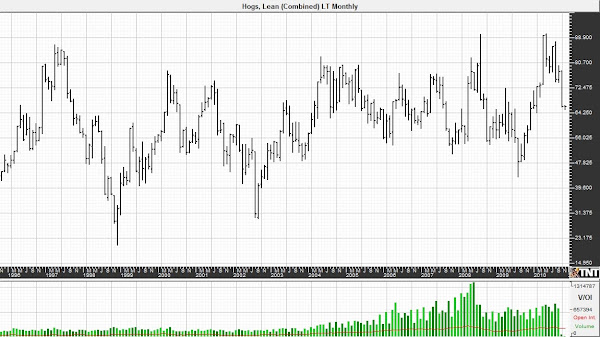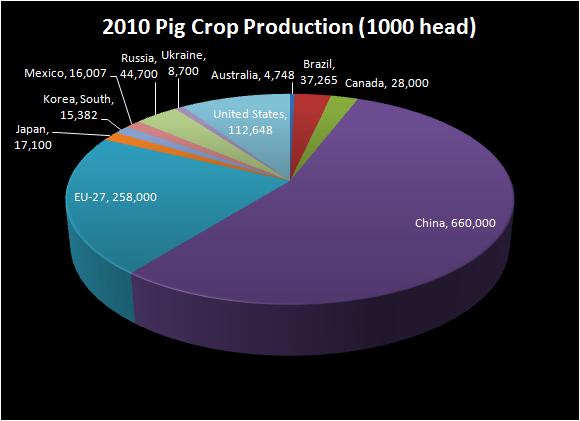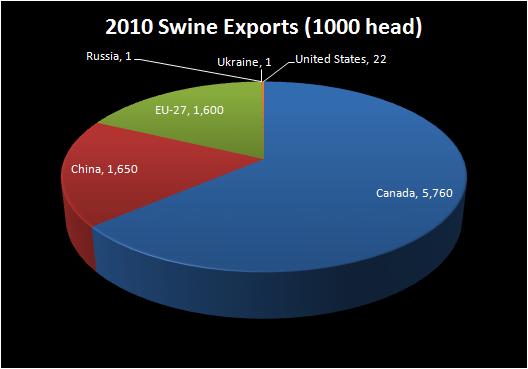traderkenny
Active member
- Messages
- 106
- Likes
- 4
The Learn About Futures Insider for Nov 4, 2010 :
Lean Hogs
Lean Hogs
Hogs - or pigs - are the humble livestock that have been domesticated for thousands of years. A global source of meat believed to be descended from the wild boars of Eurasia; pigs are unique in that they are likely livestock for settled farming communities rather than nomadic peoples since they are not easily herded for long distances. Pig, swine, shoat, piglet, boar, hog, stag, gilt, sow, or barrow; no matter how you describe them, these animals are an integral part of food and economics for many countries across the globe.
Contract Size: 40,000 lbs (`18 metric tons)
Price Quote & Tick Size: cents per pound; minimum fluctuation is $.00025 per pound ($10 per contract)
Contract Months: February, April, May, June, July, August, October, December
Trading Specs: Floor trading is conducted 9:05 am to 1:00 pm CT; Globex trading MON 9:05 a.m. - FRI 1:55 p.m. Central Time
Daily trading halts 4:00 p.m. - 5:00 p.m. Central Time
Daily Price Limit: $.03 per pound above or below previous day's settlement price; none for expiring
contract in last 2 trading days.
Trading Symbols: LH; HE on Globex

Past performance is not indicative of future results.
***chart courtesy of Gecko Software
Hog Facts
A larger percentage of hog production occurs in the Midwestern United States and the largest individual state production falls to Iowa, North Carolina, Minnesota, and Illinois. Modern hog farmers feed their swine a mixture of corn, wheat or soybean meal enriched with vitamins and minerals. A method of "finishing" hogs by feeding them nothing but corn prior to butchering them was adapted by colonist in early Pennsylvania.
Globally, production, imports and exports are distributed as shown:

** Data courtesy of USDA

** Data courtesy of USDA

** Data courtesy of USDA
Key Terms
Sow - female swine. They can give birth to a litter of pigs twice a year, with eight to twelve baby pigs per litter.
Farrowing - the name for giving birth to baby pigs
Thiamin - a "water- soluble vitamin of the B complex" which helps change carbohydrates into energy. Yeast and pork are the most concentrated sources of this vitamin.
Finishing - a process of feeding the hogs a specific food in the time frame leading up to slaughter
Key Uses
The obvious end use for lean hogs is meat (pork) however; the hide, hairs, and lard are also useable products. Pork fat may be found in weed killers, cosmetics, crayons, and other commercial products.

Key Concerns
In addition to the following variables, if you are trading lean hogs , you will also want to be aware that the USDA issues a Quarterly Hogs and Pigs report that details domestic hog inventories, as well as the birth rate and litter sizes for breeding sows.
Health: There are well over one hundred diseases and conditions which can affect hog health but many can be treated, managed, or controlled.
Feed Costs: Higher feed costs - particularly corn - can typically affect the weight and rate at which a farmer will take hogs to market. If farmers were to bring more hogs to market at lower weights to save on overall feed costs, this can to increase supply and possibly depress prices.
Domestic and International Demand: Like other livestock, there are regional and religious preferences which can impact the demands for pork. Certain advertising campaigns can work to increase consumption and any health concerns associated with one type of livestock can possibly result in a substitutive demand for another. Trade agreements and available markets for US exports are also of fundamental interest as well as the recent suggestion that increasing wealth in developing nations also increases the regular consumption of meat. In recent headlines, particular viral diseases may also impact the marketing and demand for pork.
_______________________________________________________________________________________
Disclaimer: There is a substantial risk of loss in futures trading and it is not suitable for all investors. Losses can exceed your account size and/or margin requirements. Commodities trading can be extremely risky and is not for everyone. Some trading strategies have unlimited risk. Educate yourself on the risks and rewards of such investing prior to trading. Futures Press Inc., the publisher, and/or its affiliates, staff or anyone associated with Futures Press, Inc. or www.learnaboutfutures.com, do not guarantee profits or pre-determined loss points, and are not held monetarily responsible for the trading losses of others (subscribers or otherwise). Past results are by no means indicative of potential future returns. Fundamental factors, seasonal and weather trends, and current events may have already been factored into the markets. Options DO NOT necessarily move lock step with the underlying futures contract. Information provided is compiled by sources believed to be reliable. Futures Press, Inc., and/or its principals, assume no responsibility for any errors or omissions as the information may not be complete or events may have been cancelled or rescheduled. Any copy, reprint, broadcast or distribution of this report of any kind is prohibited without the expressed written consent of Futures Press, Inc.
